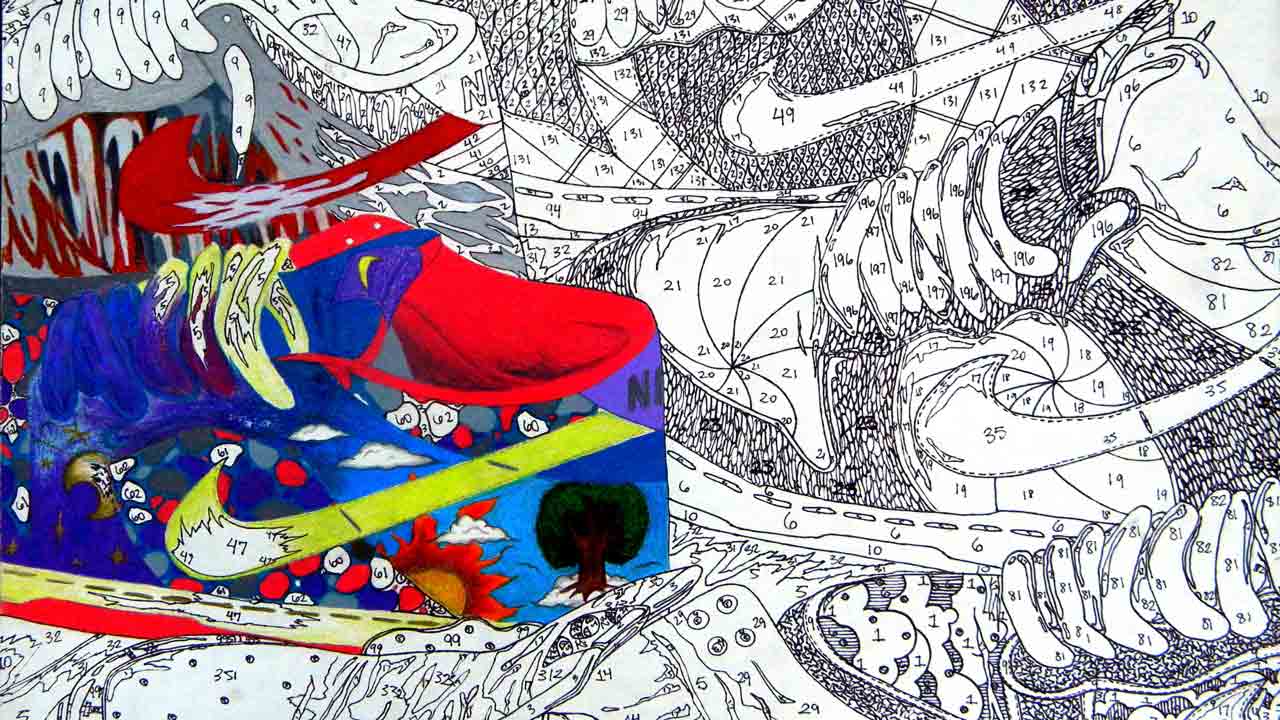A few days ago, a LinkedIn follower asked me about my advice to focus on one thing at a time in customer experience strategy. “Can’t you focus on everything at once?” he asked, paraphrased. “Because that worked for us.”
To which I replied, “Maybe” (only in more words).
Then I stumbled on an analogy, which was edited down so mercilessly it became unintelligible.
But I'm going to write about it in full today, dear readers.
So, I ask you: When you were a child, did you ever paint by number?
For the uninitiated, paint-by-number pieces look like line drawings with numbers sprinkled on them, like this one:

The numbers indicate which color should be used where. By filling in the cells with their prescribed colors, you end up with a painting.
The process of painting by number mimics good customer experience strategy. So let’s take a look in more detail. I think step one is a good place to start.
First, outline your strategy for customer centricity.
Spoiler Alert: Companies cannot focus on everything at once. It’s impossible. To be successful, businesses must define their areas of focus. Any good business uses framing devices like industry, vision, strategy, brand, and market to create a worldview that sees a particular project as acceptable or totally irrelevant.
Such devices are the filters that turn “everything” into “our business.”
Similarly, customer understanding and strategy are the dark, framing lines of your customer-centric paint by number. If you work through them, you're forced to answer foundational questions such as:
- What are we trying to accomplish with our work?
- What experience are we trying to create for each customer segment?
- What do we want our customers to look like 10 years from now?
- What’s important today, and what isn’t?
- What will be important tomorrow, and what won’t be?
Your strategy will reflect your individual business, so there's no one-size-fits-all template. However, if you have a good customer centricity partner, they can help you incorporate common industry elements and make them your own.

Next, pick your palette and add your numbers.
After framing your strategy and defining your overarching goals, the next challenge becomes translating those goals to your business segments.
Each division, team, or work group will be responsible for a different element of your strategy. The more you can clarify their goals and explain what they add to the customer experience strategy, the more your employees can help you.
Think about it this way: the clearer the plan, the easier it is for others to pick up a brush and help. If you take unfocused, reactive, or improvisational approaches, only a limited number of people can ever jump in and be effective.
This is where focused work can look like very much like “everything at once.” It depends on perspective.
Let's assume your business has a strong strategy in place. To an outsider, a random set of employees may appear chaotic, or a new project may seem out of bounds. But for the same outsider, all it takes is understanding the strategy—essentially backing away to see the overall painting—for each element's purpose in the grand scheme to become wildly apparent.

Embrace human nature and adjust to feedback.
The world has a funny way of dealing with the best-laid plans. And because your strategy for customer centricity will be a human endeavor, you can be sure of hiccups, blind spots, and mistakes.
An employee might paint outside the analogical lines. You might discover an opportunity for a creative flourish. You might realize that the perfect-shade-of-blue is not so perfect after all.
The best thing you can do is embrace the fact that things won’t go exactly to plan, and treat every misstep as a learning opportunity. This is why customer feedback is so important in the execution of your strategy. It invites the perspective of the customer into the work. It helps affirm you’re painting the best picture for them, as you’re doing the work.

Every so often, step back and admire your work.
Like any good art project, your ongoing work for customer centricity will create an experience that can be appreciated by your customers for years to come.
And also like any good art project, you’ll face complications, stresses, or small fires as you work through it. So make sure to get some perspective every once in a while. Back away from the minutiae and the detailed specifics of your customer experience, and appreciate your overall artwork.
Think about how far you’ve come, how much clearer your strategy is today than yesterday, or how each of your customers experiences your business just a little bit better now.
And remember, every little brushstroke matters.
Want more?
If you're working on customer centricity in your company, don't miss any high-impact opportunities. Our recent research study offers an in-depth look at how a prospect's experience (read: before they're a customer) affects their opinion of your business after they're a customer. It also provides insights into how your sales team can deliver more value to make prospects happier.
And hey, it's a nice, free ebook. Just click on the image below to download your copy.
Thanks for reading.
- Color-by-number Nike Project by ZERA!, CC BY-SA 2.0
- Paints by Quinn Dombrowski, CC BY-SA 2.0
- Coral Springs Watertank Mural, 2013 by Community Foundation of Broward, CC BY-SA 2.0
- Coral Springs Watertank Mural, 2013 by Community Foundation of Broward, CC BY-SA 2.0
- Art Appreciation by Dustin Gaffe, CC BY 2.0





%20(1).png)